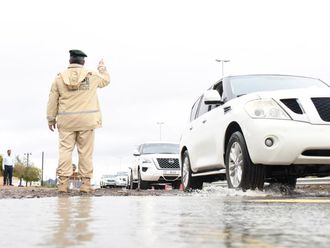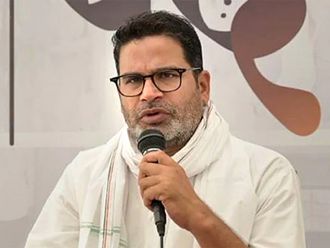NEW DELHI - Every time I visit India, I visit Nasscom, the high-tech association, to meet with the newest crop of Indian innovators. They account for only a tiny fraction of India's 1.2 billion people, most of whom remain painfully poor, but I focus on these Indian innovators because so many of them today are focused on making India unpoor.
India is now spawning large numbers of innovators concentrating on solving poor-world problems, and cloud-based technology tools and open-source platforms are enabling Indian innovators to do this with little capital. As a result, they are much more willing to try, fail and try again (the secret sauce of Silicon Valley). And, as a result, we're starting to see a merger here between ET, IT and ID. It doesn't get any better than that.
There is nothing that India needs more than an energy technology (ET) revolution that would deliver cheap, reliable power to millions suffering from energy poverty. If every village had some reliable power, plus access to high-speed Internet (IT), hundreds of millions of Indians would be able to live locally but act globally - that is, they would be able to remain in their villages, yet have access to the education and markets that could enable them to escape poverty and not have to join the hordes in the megaslums of the megacities like Mumbai or Kolkata.
The most exciting ET innovation I saw here was Gram Power. Some 400 million people in India do not have access to grid-based power and, therefore, rely on kerosene, which releases tons of carbon dioxide into the atmosphere and claims about 1.5 million Indian lives a year. Gram Power has developed an answer, says its co-founder Yashraj Khaitan: "Our Smart Microgrid system comprises renewable-based generation infrastructure installed locally in the village ((usually solar panels on a cell phone tower)), and a proprietary smart electricity distribution system that tackles the three main challenges of reliable energy access in India: theft and pilferage that forms the root cause for 58 percent of energy losses on the utility grid, high capital costs to extend the utility grid to remote low population areas, and intermittent and unpredictable power supply."
The Gram Power system comes at a capital cost, Khaitan added of "less than that of a solar home system, with a prepaid pricing model suited to our consumers' disposable income - for just 20 cents per day of recharge, consumers can operate lights, fans, radios, and televisions." The smart meters "prevent people from overdrawing power and intelligently prioritize different loads based on local conditions." Having succeeded with their pilot, Gram Power is on pace to reach 20,000 homes and have 100 telecom towers covered with solar panels for generation in the next year.
The most interesting IT project I came across was Mettl, which has developed an online assessment platform to help hiring managers "to measure and track skills of prehires and employees" to determine if they can really do a particular job. Mettl can "measure the hard skills which are directly applicable to a job rather than just the knowledge which you have acquired by rote," said its co-founder Ketan Kapoor.
"Up to now," he added "you could not measure what you can do with what you know. But unless you can apply your knowledge to a level that is useful, it doesn't mean anything. Knowledge is a commodity available to anyone. It is not a differentiator anymore in the professional market. The differentiator is what you can do with that knowledge."
Mettl is also developing a proctoring program for Internet-based distance learning so a young person in a remote Indian village could be reliably tested on a body of knowledge and the teacher given immediate feedback. "We are positive that we shall be able to solve the remote proctoring problem and disrupt the online learning and assessment space."
Now marry these breakthroughs in ET and IT with one in ID. Nandan Nilekani, a co-founder of Infosys, has been leading India's Unique Identification project, which aims to give every Indian who wants one a unique 12-digit ID number, backed by photographs, fingerprints and iris scans that can be easily verified online. The system is creating a platform that enables the government to give aid, salaries, health care and pensions much more directly to citizens without worrying it will be siphoned off by corrupt officials or fake IDs. Some 270 million Indians have acquired an ID, with about 1 million signing up per day, or as, Nilekani says, "one Finland a week." Once every Indian has a "robust real identity" based in the cloud, Nilekani told me, you have "a platform" upon which you can build all kinds of services - from cash transfers to health records to open online courses.
In sum, when ET meets IT meets ID, you have a virtuous cycle that potentially can compete with the cycle of energy poverty, broken schools and corruption. While success at scale for these start-ups is by no means assured, they are a taste of what is possible when so many more people on the planet can become inventors, makers and problem-solvers. Anyone who thinks the age of innovation is over isn't paying attention.










